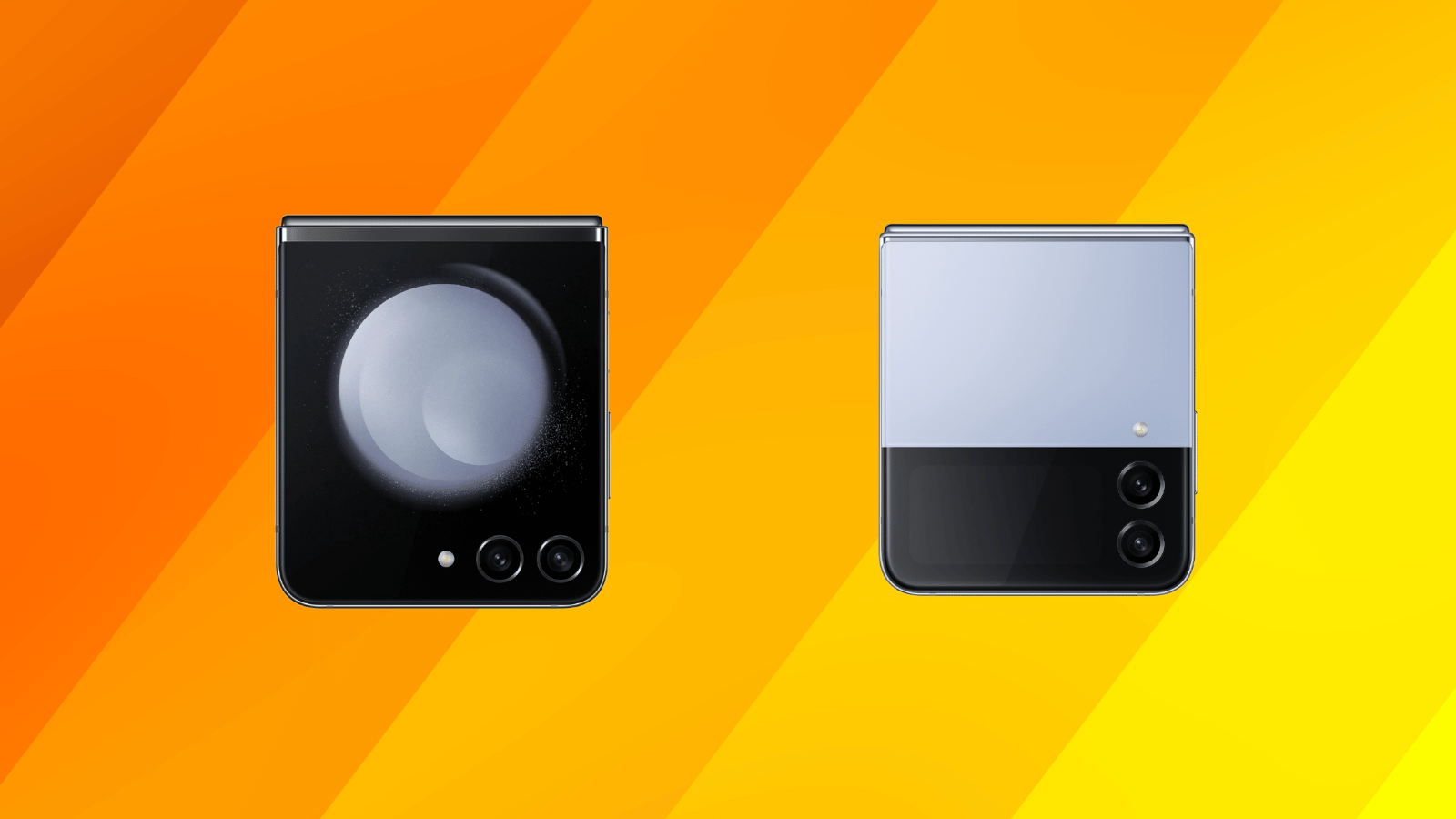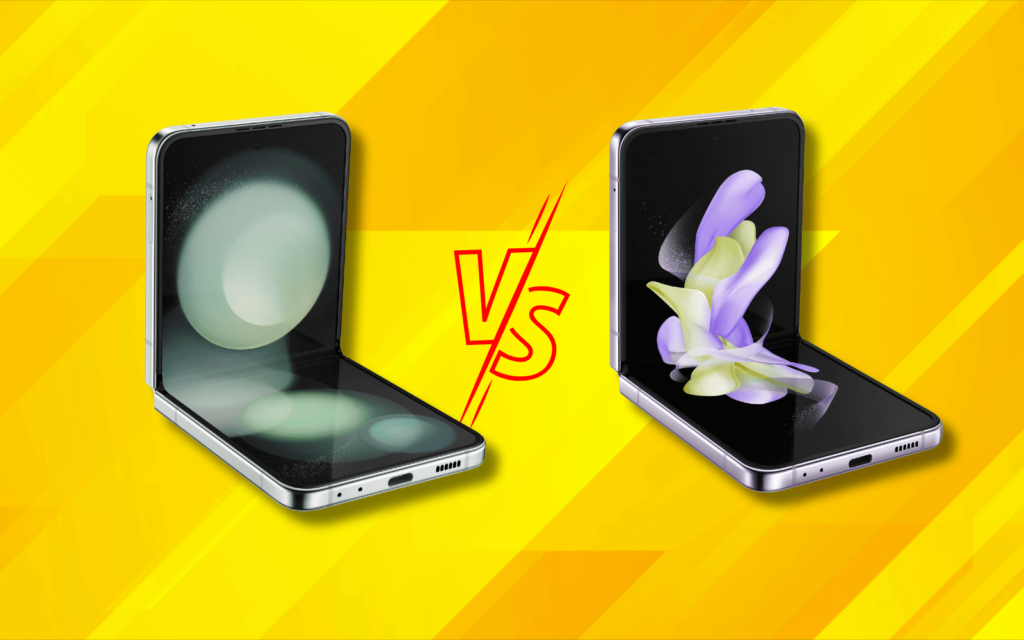Samsung’s folding ecosystem is expanding. It better be, we’re on the fifth generation of the Galaxy Flip lineup already. The Galaxy Flip 5 is many things but one of those things is ‘more expensive’. There are reasons for that, sure, but the thing we loved most about Samsung’s previous entries was the fact that the price was becoming more affordable. That… is no longer the case.
With that in mind, should you pay R30,000 for the Galaxy Flip 5 or is it fine to pay around R19,000 (the current official price) for the Flip 4? Let’s find out.
Screens like something’s new

There’s a genuinely new development in the Flip lineup. The Galaxy Flip 5 has upgraded the second screen from a little strip to a full-on touchscreen. That outer cover is now a 3.4in 720 x 748 AMOLED touchscreen panel — making it a full-on smartphone in miniature. That’s also quite a jump from the 1.9in 260 x 512 screen found in the Flip 4, making this handset easy to tell from its predecessors. If, that is, you’re looking at it from the right side.
Samsung’s done a few other engineering things too. The phone now folds (or flips, we guess) completely flat, with no angled gap between the two interior edges. It must have been a serious complaint last year because it’s all the South Korean company will talk about this year. The chassis has been ever so slightly trimmed down too, but even a direct visual comparison might be hard to spot. It’s a better idea to just keep an eye on that new and improved screen.
Just like everyone else

If you give Samsung enough money this year, you’ll get a device with its custom edition Snapdragon 8 Gen 2 inside. That’s true of the Flip, the Fold, the new tablets, and the whole Galaxy S23 range. Samsung must have gotten a bulk discount from Qualcomm or something. The Galaxy Flip 5 obviously beats out the Flip 4’s Snapdragon 8+ Gen 1 chipset but the performance gains on a phone like this aren’t that important. They’re nice, sure, but few people are hoping that their Flip 5 is a gaming powerhouse. It is. It just doesn’t matter all that much.
The other internal differences? There’s no 128GB storage model this year. It’s 8GB of RAM all round, and 256GB/512GB options. That’s all you’re getting. In that sense, the Galaxy Flip 5 is a better option, since there’s no low-storage model to accidentally buy. But as upgrade attractiveness goes, you won’t find yourself clamouring for the hardware upgrade quite so hard.
Lens do it again

Camera performance? If it’s not identical yet, it soon will be. As with the Fold 5, last year’s camera system has made a return in the Galaxy Flip 5. Software upgrades will doubtless improve performance at the ‘just launched’ stage but those upgrades can be retrofitted to older models (and probably will be). If you’re on a contract, you don’t need to dump your existing Flip just to take better snaps. It’ll be cheaper to wait a little while and get those upgrades for free.
There are two 12MP sensors in the back, arranged horizontally now, and one 10MP sensor on the interior screen. Before you go and check, these are exactly the same lenses that Samsung used in the Flip 4, down to the aperture and pixel size.
A few other internal features remain constant. The 3,700mAh battery remains in place, as do 25W wired and 15W wireless charging, you can expect the phone to be IPx8 rated, and the fingerprint sensor lives in the same place as before. Perhaps next year we’ll see something more innovative from Samsung. These things usually run in cycles, after all, and it’s about time for a design refresh.
So leave the Galaxy Flip 5 then?
We’re not about to say that you shouldn’t be excited by the Galaxy Flip 5. It’s definitely Samsung’s best Flip yet. But, and we say this every year, Samsung always makes a better smartphone. It’s extremely rare that large tech companies take steps backward. This is not one of those occasions, either. If you’re on the first or second-generation Flip, it’s time for an upgrade. If you’re using the Flip 3, believe it or not, you’ve still got quite a bit in common with the Flip 5. And Flip 4 owners? At least another twelve months will have to pass before you have to start worrying about being left behind. Perhaps as long as 24 months, but we’ll see what Samsung does in this space in 2024.




